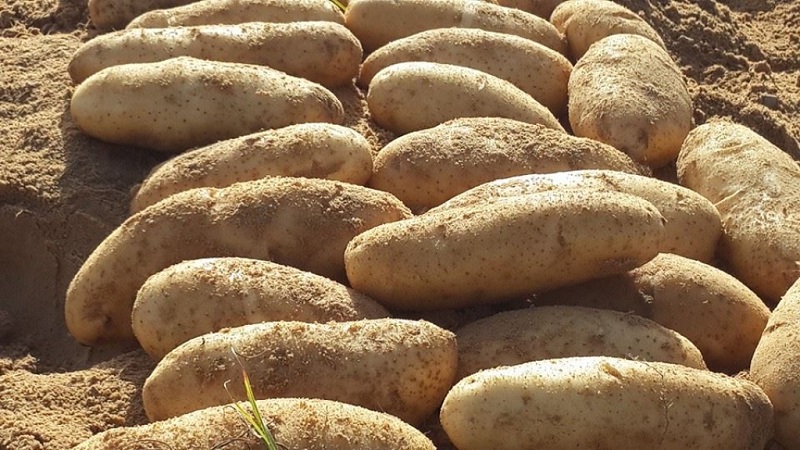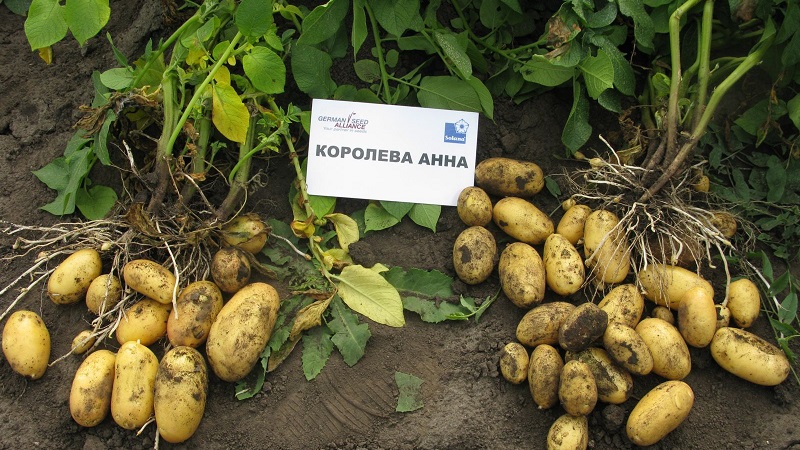What kind of potato "Firewood" is this and does it really exist?
The Internet is full of the most diverse information about unusual varieties, hybrids and varieties of familiar vegetables and fruits. For several years now, photographs with a huge long potato called "Drova" have been surfing the net.
Does such a variety really exist or is it a hoax? A detailed answer to the question is found later in the article.
The content of the article
What kind of potato Firewood
The variety is not registered in the official register of breeding achievements approved for use. Under the guise of this variety, other crops are often given out that look similar, but have nothing to do with Drovi.
Unscrupulous sellers give out completely different varieties for tubers or seeds, increasing the price of seeds due to the hype.
Its features
The main feature of the mythical variety is its size and the number of tubers on one plant.... According to the reviews of those who "saw and tried" the tubers, the culture does not have high taste characteristics and is more suitable as a fodder base for farm animals.
What does he look like
There is no official data on how the Drova tubers look like... If we rely on photographs with tubers migrating on the Internet, they look like elongated wood logs. The skin is light brown with dark blotches, a small number of eyes on the surface. On the cut, light yellow, friable.
Important. Under the guise of potatoes, Firewood can be sold completely different varieties.

Where did the rumor about this variety come from?
There is no exact information where the rumor about the Firewood potato came from. There is a version that some Old Believers brought this unusual potato from the United States of America., who grew it during the Soviet era on the territory of the Altai Territory and the Altai Republic. However, this information is very doubtful, since there is no mention of the existence of such potatoes in official sources.
Take note:
Choosing potatoes depending on the cooking method
Does it really exist and how to find the seeds of this potato
It is generally accepted that varieties that are not included in the state register of breeding achievements approved for use either do not exist or are not accepted into circulation. It is impossible to find seeds or tubers of a variety on the official seed market.... In theory, seed can be purchased from hands, but there is no guarantee that a completely different potato will not be sold under the guise of Firewood.
Is it a meme?
Most likely, this is really a meme.... Many photographs, allegedly confirming the existence of such potatoes, raise doubts about their authenticity, or they depict completely different varieties.

What are the real varieties of potatoes, similar to the variety Firewood
Of the varieties and hybrids that look similar and fit the description of the mythical Firewood, the most suitable are:
Lapot left the register of breeding achievements long ago and was ousted from the market more modern and promising varieties and hybrids. It is almost impossible to find seeds or tubers on the official seed market.It is not known who and when brought this potato; it is believed that it was developed by amateur gardeners in Siberia or the Far East. The variety was intended for regions of risky farming. It has long oblong tubers weighing up to 200 g with a thin yellowish skin. Some tubers can weigh up to 800 g.
Platinum potatoes are included in the register for use in the central region of Russia and is currently in use. It has oval elongated tubers with yellow skin and a few eyes. The average mass of one tuber ranges from 110-170 g, the mass of individual specimens can reach 500 g.
Fritella is a mid-season table potato, developed by breeders of the A. G. Lorkh All-Union Potato Research Institute... Tubers are oval, often irregular in shape, elongated, with a smooth transparent beige skin. The eyes are small and shallow. It is used in the North-West and Central Black Earth regions.
German hybrid Queen Anna is very popular in Belarus, however, found its place in vegetable gardens on the territory of the Russian Federation. Tubers are oblong, oval-elongated, large, with an average weight of about 90-120 g, individual specimens can weigh up to 400-450 g. It has a high yield - up to 450 c / ha.

The Scarb variety was bred in 1997 and is still popular today.... One bush can bring from 12 to 15 tubers weighing 160-250 g. The tubers themselves have a rectangular elongated shape, the skin is dark yellow, slightly brown or golden. Scarb has a bright yellow pulp and relatively high sugar content. The variety has a number of certain disadvantages - instability to late blight and ring rot, which limits its use.
One of the most suitable for the photos and description of the variety Firewood is American - an old variety, bred back in 1861. Nowadays it can be known as Olkhovka, Turka, Skorospelka. The plant forms up to 15 tubers per bush. The tubers themselves are elongated, with a yellowish-pink skin, weighing up to 200 g, some specimens up to 600-700 g.
Reviews of gardeners
The following reviews are left on the purchase of seeds and growing potatoes:
Olga, Volgograd: “I bought potatoes from my hands, they said it was an old variety of Drova. The tubers are long, large, it seemed tempting to breed such a miracle. The taste turned out to be very bland, tasteless - such only for livestock feed, nowhere else ".
Anton, Penza: “I saw photos on the Internet many times with the caption“ Firewood Potatoes ”, I was looking for something similar. There is nothing in the seed markets, some have not even heard of it. I bought from my hands, in the end it turned out to be completely different. The neighbor said that the variety looks more like Lapot, also old, but still not Firewood. ".
Sergey, Balashov: “I was always wary of things like buying seeds or tubers off hand. I bought into the hype around these same Firewood, in the end it turned out not to be Firewood, not even Poleshki. The variety is good, but it is not known whether it is really the same or just similar ".
Conclusion
Even if such a potato once existed on the seed market, now it has become just another Internet myth and a source of various “photo-toads”. When buying seed, you should think twice if the dishonest seller is trying to put something completely different for the variety you need.